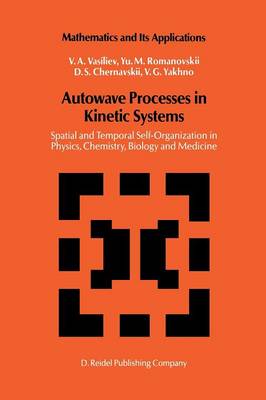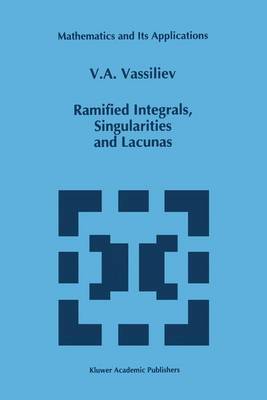Mathematics and Its Applications
2 primary works
Book 11
Autowave Processes in Kinetic Systems
by V. A. Vasil'ev, Yu. M. Romanovskii, D. S. Chernavskii, and V. G. Yakhno
Published 31 July 1987
Probably, we are obliged to Science, more than to any other field of the human activity, for the origin of our sense that collective efforts are necessary indeed. F. Joliot-Curie The study of autowave processes is a young science. Its basic concepts and methods are still in the process of formation, and the field of its applications to various domains of natural sciences is expanding continuously. Spectacular examples of various autowave processes are observed experimentally in numerous laboratories of quite different orientations, dealing with investigations in physics, chemistry and biology. It is O1). r opinion, however, that if a history of the discovery of autowaves will he written some day its author should surely mention three fundamental phenomena which were the sources of the domain in view. "Ve mean combustion and phase transition waves, waves in chemical reactors where oxidation-reduction processes take place, and propagation of excitations in nerve fibres. The main tools of the theory of autowave processes are various methods used for investigating nonlinear discrete or distributed oscillating systems, the mathe matical theory of nonlinear parabolic differential equations, and methods of the theory of finite automata. It is noteworthy that the theory of autowave,. , has been greatly contributed to be work of brilliant mathematicians who anticipated the experimental discoveries in their abstract studies. One should mention R. Fishel' (1937), A. N. Kolmogorov, G. 1. Petrovskii, and N. S. Piskunov (1937), N. Wiener and A. Rosenbluth (1946), A. Turing (1952).
Book 315
Many special functions occuring in physics and partial differential equations can be represented by integral transformatIons: the fundamental solutions of many PDE's, Newton-Coulomb potentials, hypergeometric functions, Feynman integrals, initial data of (inverse) tomography problems, etc. The general picture of such transfor- mations is as follows. There is an analytic fibre bundle E --+ T, a differential form w on E, whose restrictions on the fibres are closed, and a family of cycles in these fibres, parametrized by the points of T and depending continuously on these points. Then the integral of the form w along these cycles is a function on the base. The analytic properties of such functions depend on the monodromy action, i.e., on the natural action of the fundamental group of the base in the homology of the fibre: this action on the integration cycles defines the ramification of the analytic continuation of our function.
The study of this action (which is a purely topological problem) can answer questions about the analytic behaviour of the integral function, for instance, is this function single-valued or at least algebraic, what are the singular points of this function, and what is its asymptotics close to these points. In this book, we study such analytic properties of three famous classes of func- tions: the volume functions, which appear in the Archimedes-Newton problem on in- tegrable bodies; the Newton-Coulomb potentials, and the Green functions of hyperbolic equations (studied, in particular, in the Hada- mard-Petrovskii-Atiyah-Bott-Garding lacuna theory).
The study of this action (which is a purely topological problem) can answer questions about the analytic behaviour of the integral function, for instance, is this function single-valued or at least algebraic, what are the singular points of this function, and what is its asymptotics close to these points. In this book, we study such analytic properties of three famous classes of func- tions: the volume functions, which appear in the Archimedes-Newton problem on in- tegrable bodies; the Newton-Coulomb potentials, and the Green functions of hyperbolic equations (studied, in particular, in the Hada- mard-Petrovskii-Atiyah-Bott-Garding lacuna theory).

